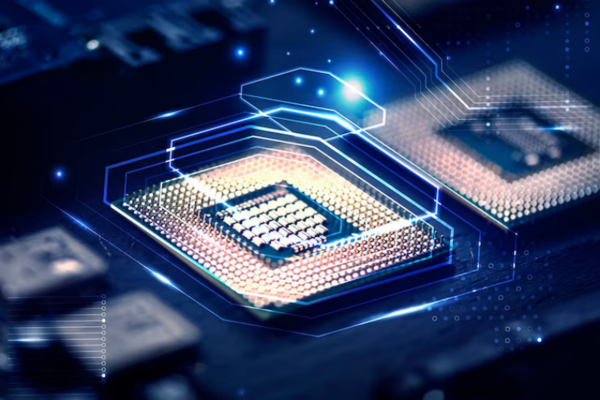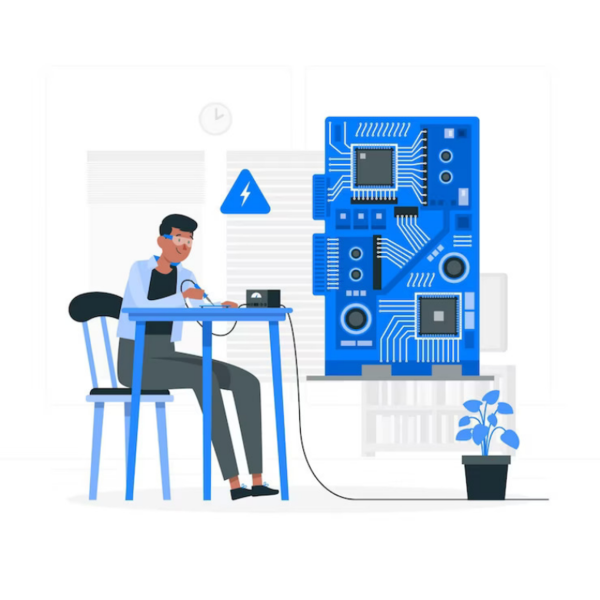Every electronic engineer knows printed circuit boards' critical role as the most crucial component of circuit layout designs. They are copper tracks laid out on a dialectic substrate that contain appropriately spaced metalized holes and laminates.

An adequately made board enables precise determination of the connection network and assembly of elements. What types of printed circuit boards can be found on the market?
Currently, several PCB boards are used in applications, so consider researching to choose the most suitable type of PCB.
Sort by the number of layers in the circuit board
Single-layer PCB is also known as single-sided PCB. This type of PCB has a simple structure and is most commonly used because it is easy to design and manufacture. One side of the circuit board is coated with any other conductive material. And it is used as a conductive material for PCBs because copper's conductive properties are excellent.
Another name for double-layer PCB is double-sided PCB. This type of PCB has a small size, making the circuit compact, very flexible, and low cost, thanks to a thin layer of conductive material. For example, copper is on both the board's top and bottom.
Multilayer PCB means more than two layers. This type of board has at least three conductive layers made of copper. The board glue is sandwiched between the insulation layers to ensure that the heat generated will not damage any circuit components.
A flexible PCB is also known as a Flex circuit. This type of circuit board is usually folded or twisted together. This type of PCB is often used from flexible materials such as PEEK (polyether ether ketone), polymide, or transparent conductive polyester film.
Aluminum bottom PCB is a flexible-rigid PCB (flex-rigid PCB). This is a combination of rigid PCB and flexible PCB, consisting of layers of flexible PCB bonded to multiple layers of rigid PCB. Mobile phones, cars, and digital cameras…, are commonly used.
Similar to flexible PCB, rigid PCB board has different layers and is classified into single, double, or multilayer types. On the other hand, unlike flexible PCBs, this type of PCB cannot be folded or bent. Therefore, it is called a rigid PCB.
Moreover, the durability of this type of PCB is relatively high. Therefore, they are applied in many parts of the computer's structure, such as CPU, RAM, and GPU. Currently, the single-sided rigid circuit board is the most designed and put into production. People can reduce the size of rigid PCB by integrating 9-10 layers on the same circuit board.
The device is used in mobile phones, digital cameras, and automotive electronics applications. This PCB board consists of rigid PCB layers bonded with flexible PCB layers. Therefore, they are considered a combination of flexible and rigid PCBs.
Mechanically, through-hole PCB technology helps to preserve parts and is more secure than making holes for PCBs by drilling to increase production costs. The surface of this type of PCB has many holes, making it easy to solder components to the pad on the opposite side of the PCB. This technology is most suitable for single-layer PCBs, making installation easy and increasing the difficulty of layers.
Components are fabricated for this type of PCB, making the installation on the board convenient. These accessories are called SMD adhesives and are mounted directly on the circuit without going through holes.

As can be seen, the primary material of the PCB board is a flexible or rigid dielectric plate. This plate is used with conductive materials such as copper arranged above. Besides, the dielectric plate is coated with glass or composite epoxy coating. Specifically, the materials used to make PCB boards are:
FR stands for Fire Retardent. This material coated with glass is the most commonly used among the types of PCBs manufactured. Based on epoxy-glass compounds, FR4 is the most synthesized and applied because it provides the best mechanical strength.
FR-1 and FR-2 are made from paper materials and phenolic compounds. These materials are divided into standard and non-hydrophobic, and halogen-free grades. They are used for single-layer PCBs. The characteristics of FR1 and FR2 are similar.
The only difference is the internal glass transition temperature. The glass transition temperature level is higher than that of FR2.
This material is made from paper, two layers of glass epoxy textile, and a phenolic compound. At the same time, this fuel is used for single-sided PCB, and CEM-1 is used to replace FR4, but the cost of CEM1 is higher than FR4.
CEM-3 is a compound of glass epoxy that is white and used in double-layer circuit boards. Furthermore, the durability of CEM-3 is lower than that of FR4, but it is cheaper than FR4. Therefore, this material is an excellent alternative to FR4.
PCB board manufacturing
Polyimides are used in flexible PCBs. It is made from materials such as Rogers, kepton, dupont. Polyimide materials have good electrical conductivity, can be used over a wide temperature range, and have high chemical resistance. The operating temperature of this material is from -200◦C to 300◦C.
Prepreg is impregnated before. This is fiberglass impregnated with resin. This resin is dried, and when heated, it melts and binds. Prepreg can be bonded similarly to FR4 material. Prepreg has a wide range of resins and resins that meet SR standards, MR medium resins, or high HR resins.
Similar to the structure of layers and impedance. Depending on the material, they have different thickness requirements. This material has a high glass transition temperature and is generally halogen-free.

Following are some of the most commonly used PCB design software:
Multisim software is compelling and straightforward. Electronics Workbench developed it and is currently a National Instruments (NI) division.
This software includes microcontroller simulation (MultiMCU) and input, and output features integrated into the software drawn on the PCB circuit. Multisim is popular and widely used in learning and industry for PCB circuit training.
To design the most popular and very easy-to-use PCB software. Eagle is an acronym for Easy Applicable Graphical Layout Editor. It is developed from CadSoft Computer. Besides, Autodesk is currently the developer of this software.
Australian software company Altium Limited is researching and developing Altium Designer software. This is one of the software that has 3D visualization and PCB inspection directly from PCB drafting. The features of this software are 3D PCB design, schematic capture, FPGA development, and release/data management.
This is software used to design and simulate circuits. EasyEDA is an integrated tool that records circuit diagrams and simulates Spice circuits based on Ngspice and PCB layouts.
The highlight of this software is that it is web-based and can be used in a browser window. Therefore, the EasyEDA software is independent of the operating system.
Jean-Pierre charras developed KiCad. The software is equipped with tools that can create BoM (Bill of Material), 3D views, and illustrations of the PCB, along with all the components applied to the circuit board. In the library, many software components and features to which the user can add custom functions are available. In addition, this software is supported in many different languages.
CircuitMaker software is developed from Altium. The editor includes locations of basic features, used to design multi-channel and hierarchical PCB schematics with advanced technologies. All schematics are uploaded to the server, and the file is available for everyone to view if the user has a CircuitMaker account.
I hope everyone can understand the PCB board and the materials used to create software for use with many different electronic and digital devices.
By continuing to use the site you agree to our privacy policy Terms and Conditions.
Recruit global agents and distributors Join us